Speakers
Description
In a digital gate-based quantum computer, the effect of noise is usually described as a quantum channel appearing either before or after each gate. However, realistic noises are more complicated because every gate is experimentally realized via the time evolution of quantum controls, thus noises act along with (and affect) the evolution of the system. To handle noise effects in a more realistic way we developed a different approach called Noisy Quantum Gates that model the effect of the environment through a linear and stochastic differential equation (SDE) for the state vector. Through SDEs it is possible to develop a set of noisy quantum gates sufficient for implementing universal quantum computing, which can be handled like any other standard quantum gate. This description is statistically equivalent to the density matrix formulation: by taking the average over different noise realizations, one recovers the evolution of the density matrix. At the same time, it presents the computational advantage of working with the state vector.
First we identified a minimal set of universal quantum gates that can be represented by using an Hamiltonian model: we specialized on IBM superconducting devices and implemented the expressions for the noisy gates of IBM native gate set in a python library, in order to perform classical simulations of IBM quantum computers. We compared our simulations with those of Qiskit noise model.
As a second step, we focused on specific quantum algorithms such as the Quantum Fourier Transform (QFT) and Greenberger–Horne–Zeilinger (GHZ) algorithm. We used our noise model in order to analyze the performances of these algorithms, their efficiency and criticality. The analysis has been performed using the software Qiskit, developed by IBM and our simulator for the noisy gates.
We found that noisy gate model performs better when trying to reproduce the Lindblad equation but needs to be improved when trying to reproduce the behaviour of a real quantum computer.
As subjects for future research, the model can include the description of cross-talks errors between qubits, correlated noises and coherent errors.
Email Address of submitter
vischimichele@gmail.com, dibartolomeo.giov@gmail.com
Short summary of your poster content
Brief description of the Noisy Quantum Gates model and its motivations. Report of simulations' results.
| Poster printing | Yes |
|---|
